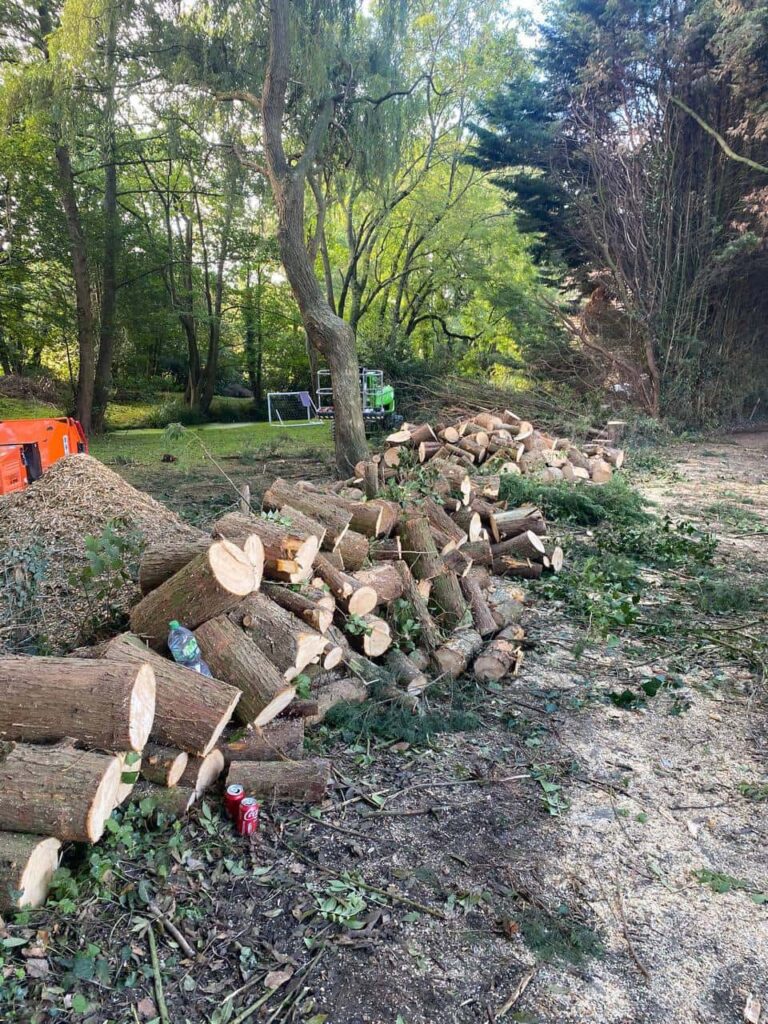Emergency Tree Stump Removal: Dealing with Fallen Trees and Storm Damage
Introduction: Nature can be both awe-inspiring and unpredictable. While trees provide us with countless benefits, they can become a hazard during severe weather events, such as storms, hurricanes, or heavy snowfall. A tree falling due to storm damage often leaves a significant challenge – a tree stump. In this blog post, we’ll discuss the importance of emergency tree stump removal and the steps to take when dealing with fallen trees and storm damage.
The Aftermath of Storm Damage: Tree Stumps as Hazards
When a tree is toppled during a storm, its stump remains embedded in the ground, potentially causing various problems:
Tripping Hazards: Stumps left in the aftermath of a fallen tree can be dangerous tripping hazards, especially in areas with high foot traffic.
Obstructed Space: Stumps occupy valuable space that could be used for landscaping, replanting, or other purposes.
Pest Infestation: Fallen trees and their stumps can attract pests, including wood-boring insects and fungi, which can spread to nearby trees.
Aesthetic Concerns: Stumps can detract from the overall aesthetics of your property, making it less visually appealing.
The Importance of Emergency Stump Removal:
1. Safety First:
The safety of your family, visitors, and property is paramount. Removing tree stumps promptly eliminates tripping hazards and potential accidents.
2. Prevent Further Damage:
Leaving tree stumps in place can lead to rot, decay, and further structural instability, potentially compromising the health of other nearby trees.
3. Space Utilisation:
Removing stumps allows you to use your outdoor space better, whether for landscaping, gardening, or other activities.
4. Pest Control:
By eliminating stumps, you reduce the risk of pests and diseases spreading to healthy trees on your property.
Steps to Take for Emergency Tree Stump Removal:
1. Prioritise Safety:
Before taking any action, ensure that the area is safe for work. Remove debris, fallen branches, or other obstacles that pose additional risks.
2. Assess the Damage:
Evaluate the extent of the damage and the condition of the fallen tree. Determine whether it is safe to proceed with stump removal or if there are any immediate hazards.
3. Contact Professionals:
While you may be tempted to tackle stump removal yourself, it’s often best to enlist the help of professional tree surgeons. They have the expertise, equipment, and experience to safely and efficiently remove stumps, especially in emergencies.
4. Discuss Restoration Plans:
Consult with the tree surgeons to discuss your plans for the area after stump removal. Whether you intend to replant, landscape, or leave the space open, having a plan in place can guide the removal process.
5. Obtain Necessary Permits:
Check if local permits or permissions are required for tree stump removal, especially if you live in an area with specific tree care regulations.
6. Eco-Friendly Disposal:
Discuss environmentally friendly disposal options for the tree stump material, such as recycling it as wood chips or mulch for landscaping.
Conclusion: Emergency tree stump removal is critical in the aftermath of fallen trees and storm damage. It enhances safety and allows you to reclaim and revitalise your outdoor space. By enlisting the help of professional tree surgeons and following a systematic approach, you can navigate the challenges of storm-damaged trees and create a safer and more aesthetically pleasing environment for your property.
Call us on: 01603 361 093
Click here to find out more about Wroxham Tree Surgeons
Click here to complete our contact form and see how we can help with your tree’s needs.

